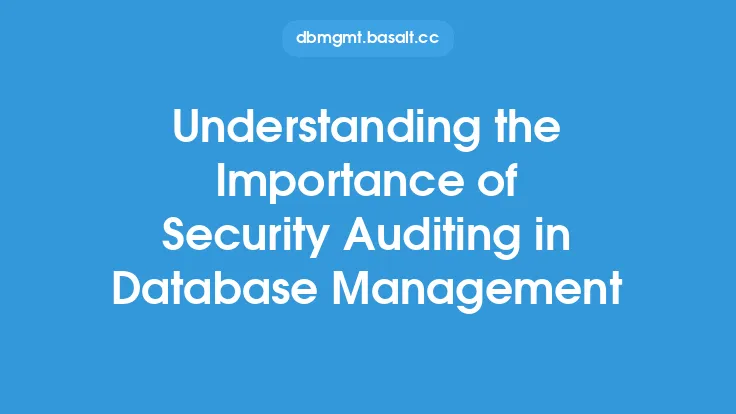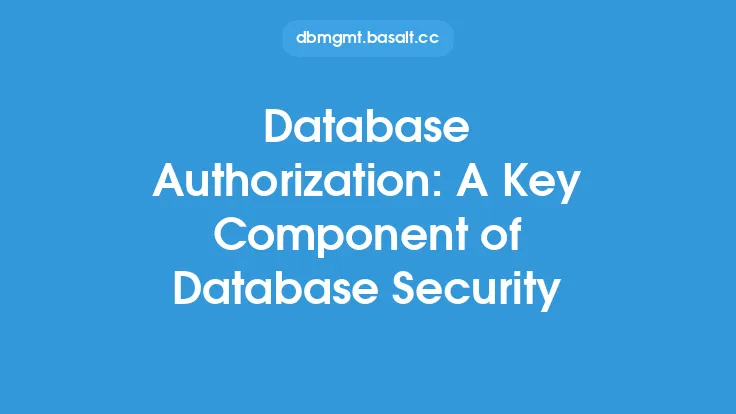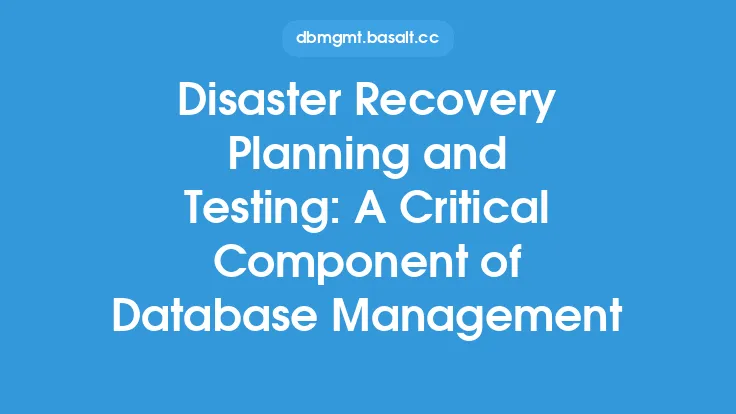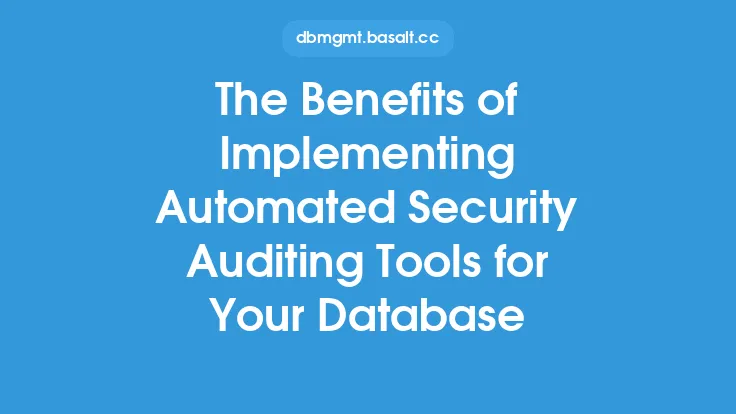Database auditing is a critical component of database security that involves monitoring and tracking all activities that occur within a database. This includes tracking changes to database structures, data modifications, and user activities. The primary goal of database auditing is to ensure the integrity, confidentiality, and availability of database data. In this article, we will delve into the world of database auditing, exploring its importance, key components, and technical aspects.
Introduction to Database Auditing
Database auditing is a process that involves collecting and analyzing data about database activities. This data can be used to identify potential security threats, track changes to database structures, and monitor user activities. Database auditing is an essential component of database security, as it provides a layer of transparency and accountability. By monitoring database activities, organizations can detect and respond to security incidents, ensure compliance with regulatory requirements, and improve overall database performance.
Key Components of Database Auditing
There are several key components of database auditing, including audit trails, audit logs, and audit policies. Audit trails refer to the sequence of events that occur within a database, including data modifications, user logins, and changes to database structures. Audit logs, on the other hand, are the physical records of these events, which can be stored in a variety of formats, including text files, databases, or specialized logging tools. Audit policies define the rules and parameters for auditing, including what events to track, how often to collect data, and who has access to audit logs.
Technical Aspects of Database Auditing
From a technical perspective, database auditing involves several key components, including database management system (DBMS) auditing, operating system auditing, and network auditing. DBMS auditing involves tracking events that occur within the database management system, such as data modifications, user logins, and changes to database structures. Operating system auditing involves tracking events that occur at the operating system level, such as file access, user logins, and system configuration changes. Network auditing involves tracking events that occur at the network level, such as network connections, data transmissions, and packet captures.
Database Auditing Techniques
There are several database auditing techniques, including native auditing, external auditing, and hybrid auditing. Native auditing involves using the built-in auditing capabilities of the DBMS, such as Oracle's Auditing feature or Microsoft SQL Server's SQL Server Audit. External auditing involves using third-party auditing tools, such as LogRhythm or Splunk, to collect and analyze audit data. Hybrid auditing involves using a combination of native and external auditing techniques to provide a comprehensive auditing solution.
Benefits of Database Auditing
Database auditing provides several benefits, including improved security, compliance, and performance. By monitoring database activities, organizations can detect and respond to security incidents, ensure compliance with regulatory requirements, and improve overall database performance. Database auditing also provides a layer of transparency and accountability, allowing organizations to track changes to database structures, data modifications, and user activities.
Challenges of Database Auditing
Despite its importance, database auditing poses several challenges, including data volume, data complexity, and data analysis. Database auditing can generate large volumes of data, which can be difficult to collect, store, and analyze. Database auditing data can also be complex, requiring specialized skills and tools to interpret and analyze. Additionally, database auditing requires ongoing maintenance and tuning to ensure that audit policies are up-to-date and effective.
Best Practices for Database Auditing
To get the most out of database auditing, organizations should follow several best practices, including defining clear audit policies, implementing robust auditing mechanisms, and regularly reviewing and analyzing audit data. Organizations should also ensure that audit data is properly stored and protected, using techniques such as encryption and access controls. Additionally, organizations should establish clear procedures for responding to security incidents and compliance issues, using audit data to inform and guide their response.
Conclusion
In conclusion, database auditing is a critical component of database security that involves monitoring and tracking all activities that occur within a database. By understanding the key components, technical aspects, and benefits of database auditing, organizations can improve their overall database security posture and ensure compliance with regulatory requirements. While database auditing poses several challenges, following best practices and using specialized tools and techniques can help organizations overcome these challenges and get the most out of their database auditing efforts.





